Lately, I have been suggesting people go back to the traditional “the way we’ve always done it” training and see if they see a difference in the way their horse responds. Does she like it or not?
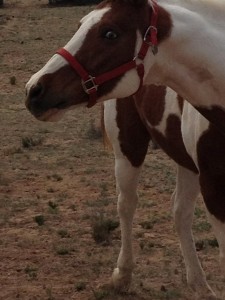 Granted, some horses are fine with the round pen, desensitizing, and other things. Some even enjoy it. Yet others will do anything to get out of it.
Granted, some horses are fine with the round pen, desensitizing, and other things. Some even enjoy it. Yet others will do anything to get out of it.
I want Liberty Foundations students to really notice the difference in their horse’s expressions and demeanor, when they put them in the round pen and drive them around, as opposed to when they work with their horses at liberty.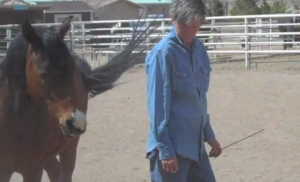
There is nothing wrong with the round pen itself. Yet know that it was designed to force a relationship. “The round pen allows greater interaction between horse and handler and more control over the horse because it cannot fully avoid its human handler….”
“…The round pen has historic roots dating to the tradition of Spanish horsemanship and probably even earlier antecedents.” Wikipedia. Cowboys, charged with breaking 10 or 12 colts a day, could not do it efficiently on the open range, or maybe in a big corral or arena, and found this to be a great way to get the job done.
But imagine if you just met someone and they forced you into a relationship with them, stuck you in a small space and said, “you will be my friend and/or servant.” They may have even been friendly, but still, you didn’t feel like you had a choice. What would that feel like? Basically, if the other person had the upper hand, you would feel that you had to comply, or you would resist.
That’s what the horse feels like. The reason we’ve been able to get away with it for such a 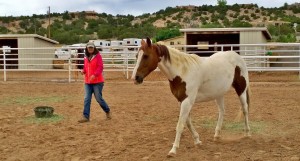 long time is that most horses are compliant. They recognize the higher intellect, and the force in us.
long time is that most horses are compliant. They recognize the higher intellect, and the force in us.
For some people, all they have is a round pen to work with and that’s fine. I don’t care what shape it is really, if it’s useful and the horse responds with joy and doesn’t just go through the motions to “get it over with.” It can also be useful for gait training, and voice training – whoa, trot, walk, etc. One of my horses really enjoys this type of work.
Those same gaits can be gained on a lunge line, which some horses also don’t like. I like the lunge line because I feel the horse stands up better and doesn’t learn to lean in on one side, and/or brace its inside shoulder. This leaning/bracing can be a problem with a small round pen which then may be harder to fix when you get in the saddle.
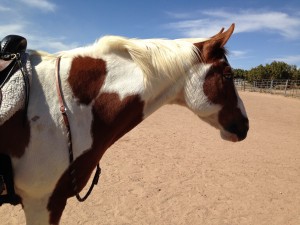 The other thing I’ve been experimenting with, to see how little actual stuff I can have on a horse and maintain a connection, is a liberty rein with a lunge line attached. No halter.
The other thing I’ve been experimenting with, to see how little actual stuff I can have on a horse and maintain a connection, is a liberty rein with a lunge line attached. No halter.
My horses love this. I notice far less bracing, and more looseness, more necks stretching out, less dropping a shoulder to the inside or bracing the neck towards the outside. Eyes are bright. It’s different! No headgear!
It feels like an extension of liberty training. In a way, it is. Less is more, always. How can I get away with the least amount of pressure and still influence my horse while still in relationship?
With this setup, they are making bigger circles, and making different shaped circles, exploring the boundaries of that new option. This is great for people in big boarding stables who have to have equipment on their horses while taking them from paddock to pasture or in an arena. It’s great for anyone who just wants a different way of interacting.
I consider these ways of interacting a way of forming a bridge between the liberty work you 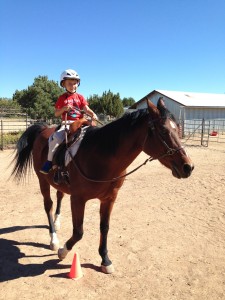 are doing and the existing knowledge you may have of horse training. People don’t need to throw the baby out with the bathwater. Most of us have learned traditionally and there is a lot of good with those techniques. Otherwise we wouldn’t be the horsemen and women we are today.
are doing and the existing knowledge you may have of horse training. People don’t need to throw the baby out with the bathwater. Most of us have learned traditionally and there is a lot of good with those techniques. Otherwise we wouldn’t be the horsemen and women we are today.
But what you as a liberty student can bring to bear is a new understanding of your horse having choices, in harmony rather than in submission.
Look at your horses’ eyes and possibly look at their ears to make sure they aren’t flattened. Find out how the horse feels about the activity. Feel their body language. These are the important factors to track, whether you’re doing liberty work or any other horsemanship, or riding.
Some people have arrived at Liberty Foundations because their horse was burned out with some trainer or method. Then they may not want to have anything to do with the past experiences, because they have noticed the difference in their horse and that’s why they’ve come to the liberty doorstep.
Others arrive and then wonder what the heck we’re doing here, nothing’s happening. The horse just meanders around the arena, maybe dances with the person a little, maybe there’s a little something, but why?
For those people, I invite them to go back. See from whence you have come. See if your horse enjoys any of what you do together. See who you are.
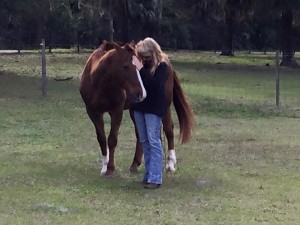
The other piece I feel has been sorely missing in “the way we’ve always done things” is the energetic piece, for human and horse. Horses operate energetically. Look at how the movement of one ear can move another horse. If we could do that we would be remarkably tuned in.
We can work at it, with our own body language, and internal energy. We can learn to shift our energy for many different horses and situations. Expert horsemen and women do this, but they may not have a word for it.
With Liberty Foundations, we start at the beginning with the energy, because it’s so vital. Because it’s everything to horses. It’s how they survive.
What’s the difference between following and driving? The horse feels that, even if you don’t.
Can you tell when you’re influencing a horse with your body? The horse will let you know. He will respond when he feels something familiar and deep, connecting the two of you.
Is licking and chewing a sign that the horse is relaxed? Sorry, not always. In the wild, the horse will lick and chew when a predator or dominant horse is near, to let the other know that they are submissive. It is a sign of submission or survival, not necessarily relaxation. Sometimes it can be a release, especially if accompanied by yawns and dropped eyelids, as we find while doing energetic and other forms of bodywork.
So this is one reason why it’s important to go back and compare, if it hasn’t become clear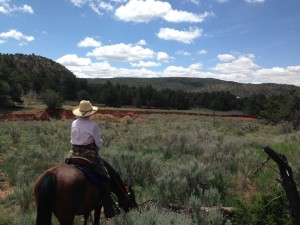 through the liberty training. This is why also we have somewhere to go with the Liberty Foundations, because there are no horses on the planet except maybe wild or totally retired ones, who don’t need to wear halters, saddles, bridles and other accoutrements in relationship to their people. Our program is as follows: Open Bond – Online – OnBoard, to cover what you might do with a horse in mutual connection.
through the liberty training. This is why also we have somewhere to go with the Liberty Foundations, because there are no horses on the planet except maybe wild or totally retired ones, who don’t need to wear halters, saddles, bridles and other accoutrements in relationship to their people. Our program is as follows: Open Bond – Online – OnBoard, to cover what you might do with a horse in mutual connection.
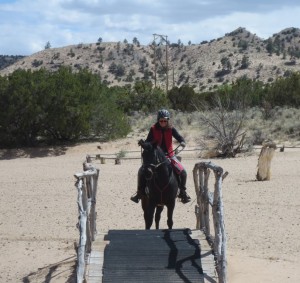 In each of those areas, I encourage people to seek out what brings joy to their horses. Build a bridge between the valuable part of what you know and true liberty, in ways that don’t confuse your horse but that pique her curiosity. Take the Liberty Foundations and whatever else works for you honestly, where ever you go, in your heart, in the heart of your horse, out into the world.
In each of those areas, I encourage people to seek out what brings joy to their horses. Build a bridge between the valuable part of what you know and true liberty, in ways that don’t confuse your horse but that pique her curiosity. Take the Liberty Foundations and whatever else works for you honestly, where ever you go, in your heart, in the heart of your horse, out into the world.
(c) Susan Smith, Horses at Liberty Foundation Training, Equine Body Balance (TM)
Please see my
Events for information on upcoming clinics and workshops.



One thought on “Build a horse bridge from “the way we’ve always done things” to true liberty”
Comments are closed.